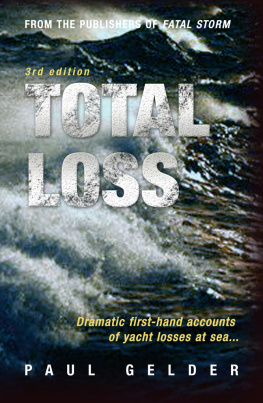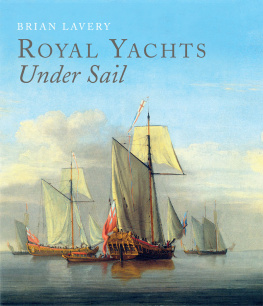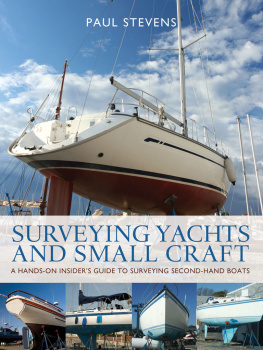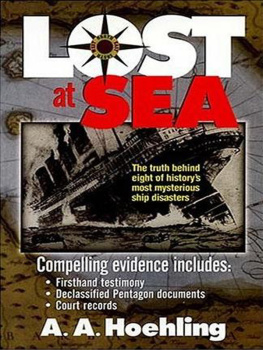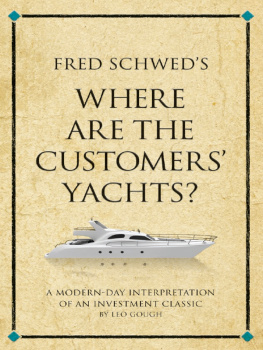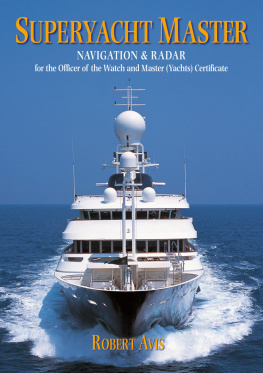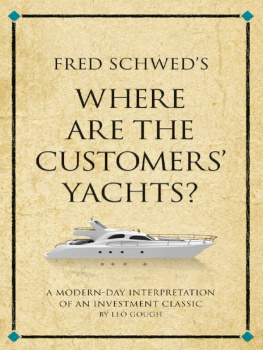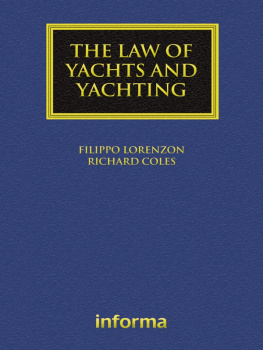OTHER TITLES OF INTEREST
TOTAL LOSS
Dramatic First-Hand Accounts of Yacht Losses at Sea
3rd edition
Paul Gelder
978 0 7136 8783 5
Dramatic first-hand accounts of yachts lost at sea through collision, fire and explosion, exhaustion and crew failure, navigational blunders, dismastings and severe storms. A bestseller since first publication, this is a compelling thought-provoking read.

LEFT FOR DEAD
The Untold Story of the Tragic 1979 Fastnet Race
Nick Ward, with Sinead OBrien
978 1 4081 2816 9
The tragic and inspirational account of Nick Wards survival against all the odds in the 1979 Fastnet. Updated for the new edition with the gripping account of Nicks 2009 Fastnet triumph finally rounding the rock after 30 years.
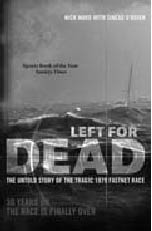
DISASTERS AT SEA
Dag Pike
978 0 7136 8878 8
Based on the authors experience, the book features a mosaic of accounts dealing with a wide range of yachts, motorboats and commercial vessels which have encountered difficulty at sea. They are all analysed in a useful yet entertaining way.
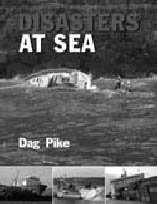
FATAL STORM
The Inside Story of the Tragic Sydney to Hobart Race
Rob Mundle
978 1 4081 0700 3
Telling the story of the 1998 Sydney to Hobart yacht race, this book details the history of the race, the excitement of the start and the thrill of competition. It contains extensive interviews with officials, survivors and rescue service personnel.
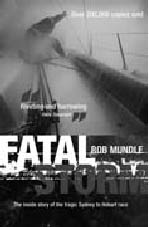
DEADLIEST CATCH
Desperate Hours
978 1 4081 0623 5
This is the authorised book of the hit TV series featuring the harrowing struggles of fishermen on the wild and freezing Bering Sea its the perfect storm but for real.
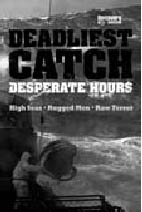
SUNK WITHOUT TRACE
30 DRAMATIC ACCOUNTS OF
YACHTS LOST AT SEA
PAUL GELDER

TO MY WIFE ANNE, WHO HAS KEPT ME AFLOAT, BOTH ASHORE, WHERE A TIDE OF PAPERWORK THREATENS TO OVERWHELM ME, AND OFFSHORE WHERE, AS THEY SAY, WORSE THINGS HAPPEN AT SEA
Published by Adlard Coles Nautical
an imprint of A & C Black Publishers Ltd
36 Soho Square, London W1D 3QY
www.adlardcoles.com
Copyright Paul Gelder 2010
First edition published 2010
ISBN 978-1-4081-1200-7
All rights reserved. No part of this publication may be reproduced in any form or by any means graphic, electronic or mechanical, including photocopying, recording, taping or information storage and retrieval systems without the prior permission in writing of the publishers.
The right of the author to be identified as the author of this work has been asserted by him in accordance with the Copyright, Designs and Patents Act, 1988.
A CIP catalogue record for this book is available from the British Library.
This book is produced using paper that is made from wood grown in managed, sustainable forests. It is natural, renewable and recyclable. The logging and manufacturing processes conform to the environmental regulations of the country of origin.
Typeset in 10.5 on 12.5pt Adobe Garamond Pro
Printed and bound in UK by Cox and Wyman Ltd
Note: while all reasonable care has been taken in the publication of this book, the publisher takes no responsibility for the use of the methods or products described in the book
CONTENTS
Disaster at sea comes in many disguises. This collection of 30 dramatic accounts of yachts lost at sea covers several decades, and crosses the Atlantic to the Pacific and Indian oceans, venturing to Australia and New Zealand, as well as the Caribbean, Americas East Coast and closer to home in Holland and the UK, including the Solent, Suffolk and Scotland.
Most of the stories date from the 1970s to the 1990s and involve a wide variety of craft, from cruising yachts, ranging in size from 23ft to 45ft, as well as Open 60 ocean-racing yachts, multihulls (both catamarans and trimarans), sloops, yawls, gaff-cutters and a barge yacht.
The disasters include storms in one case a terrifying hurricane of 130 knots as well as equipment failure, involving, among other things, broken anchor chain, failed bilge pumps, an unsecured mast and broken rudders. There are also incidents of faulty navigation resulting in deadly encounters with reefs and harbour entrances.
There are fires, explosions, capsizes, encounters with UFOs (unidentified floating objects), a yacht which sinks in mid-Atlantic after being struck by a whale and yachts that spring mystifying leaks and slowly sink, despite the desperate efforts of crew to find or fix the leak. Finally, there is the human element as sheer exhaustion or seasickness take their toll on skipper or crew.
Advice from the long-suffering skippers involved in these tragic tales varies from never change the colour of your boat to unselfishly questioning their own judgement or preparation before putting to sea.
If your yacht was dismasted, would you have the tools the cut away the rig? As one skipper found, a mast becomes a horrific hammer which can puncture a hole in your hull. If your rudder dropped off, would you have the equipment and the ingenuity to fix things and create an emergency steering system? When did you last check your liferaft and lifejackets?
Do you carry a knife? Three skippers in this book survived, thanks to having a handy knife in one case, he had to cut his personal lifeline, when it became a death line, trapping him on a capsized yacht. In two other cases, it was needed to cut the painter on a liferaft which threatened to sink, dragged along by the yacht they had just abandoned.
How secure is your anchor chain? In one incident grippingly described in these pages, the anchor chain broke after been sawn through by coral. In another, the chain ran out of the anchor locker and disappeared overboard when the bitter end lashing simply snapped. The yacht was a total loss.
For the single-handed sailor aboard a badly-leaking monohull, there is the dreadful conundrum of choosing between pumping for your life, stopping to search for the cause of the leak, or abandoning ship while there is still time to launch the liferaft and collect essentials. In the case of Peter Tangveld (Mystery Collision, Miraculous Survival), he had no liferaft aboard his 32ft yacht Dorothea. Instead, he made a remarkable 55-mile voyage to safety in his 7ft plywood dinghy.
Self-sufficiency, self-reliance and self-preservation are absolute essentials of good seamanship. Qualities that, in this modern age, seem endangered by too many of our rule-makers.
You have to admire the resourcefulness, pluck and fortitude of the 30 skippers and their crew on these unlucky yachts. They include legendary sailors, like the late H W Tilman and Malcolm Robson, as well as acclaimed contemporary writers, like Peter Nichols, author of


